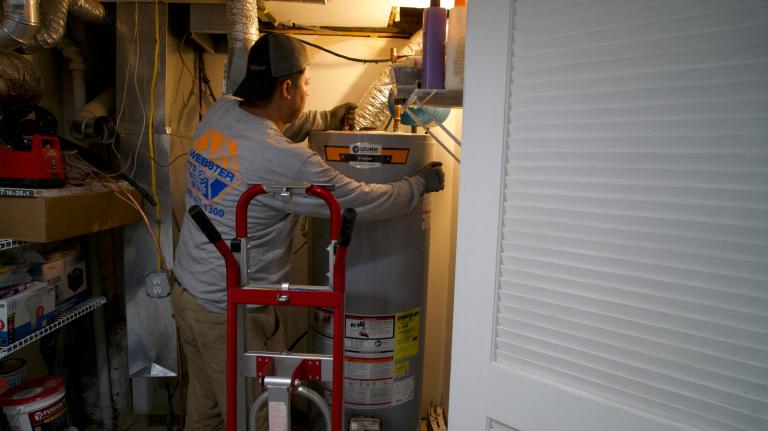 Road to ruin.Photo: Alfonso SurrocaCrappy urban development isn’t just ugly and noisy and dirty. It is turning out to be lethal.
Road to ruin.Photo: Alfonso SurrocaCrappy urban development isn’t just ugly and noisy and dirty. It is turning out to be lethal.
One Toronto study looked at how the quality of a community’s streets can affect people’s health, factoring into drastically reduced life expectancy. It’s the focus of an article in The Globe and Mail that discusses how Toronto and other cities are segregated not just by race and income, but also by the quality of the built environment — and what that division means for residents’ health.
People living in less walkable, outlying parts of the city, with less access to green space and recreational opportunities, as well as healthy food, are at increased risk of obesity and diabetes:
The first Canadian study of its kind, published in 2007, the Diabetes Atlas investigated 140 Toronto neighborhoods over three years to examine the role of several factors — including community design, population density, access to healthy and unhealthy food — on the diabetes epidemic. Poverty and ethnicity were found to be key in the development of type 2 diabetes. The researchers also concluded that walking and transit times to recreation facilities in the city’s outlying neighborhoods were as long as 40 minutes and 20 minutes, respectively, each way. It takes only 30 minutes of walking or moderate exercise, combined with a healthy diet, to cut the risk of diabetes in half. But a walk through a bleak or potentially dangerous neighborhood is hardly inspiring, especially if the only nearby landmark is a highway …
We used to call them ugly, but now social geographers and medical practitioners label the disconnected sections of the city “obesogenic,” meaning environments that promote obesity.
“Obesogenic” is not a word I had ever heard before I read this article. But apparently it’s been around since about 1996. It makes sense that somebody would have coined it — the Centers for Disease Control reports that nine states in the United States now have more than 30 percent obesity rates.
How did we get there? Sheldon Jacobson of the University of Illinois has just released a study looking at the correlation between increasing automobile use and increasing obesity:
After analyzing data from national statistics measured between 1985 and 2007, Jacobson discovered vehicle use correlated “in the 99-percent range” with national annual obesity rates.
“If we drive more, we become heavier as a nation, and the cumulative lack of activity may eventually lead to, at the aggregate level, obesity,” he said …
The sedentary lifestyle that automobile use enables coupled with the prevalent role it plays in increasing the sprawl of our cities, towns and suburbs is the “societal price we pay for always being in a rush to get places,” Jacobson said.
“For the last 60-plus years, we’ve literally built our society around the automobile and getting from point A to point B as quickly as we can. Because we choose to drive rather than walk or cycle, the result is an inactive, sedentary lifestyle. Not coincidentally, obesity also became a public health issue during this period.”
Before the automobile became such a prevalent mode of transportation for the vast majority of Americans, “it took much more energy just to live,” Jacobson said.
The thing is, even if you don’t own an automobile, you live in a place that is built for them — because by now, every place is. As the Toronto study and others in the United States have revealed, it’s not just the autocentric suburban states in the so-called “Diabetes Belt” that have a problem. Residents of dense urban areas also suffer from high rates of obesity and diabetes, in part because of the lack of healthy food choices, in part because certain ethnic groups are more predisposed to diabetes, and in part because the streetscape is degraded and ignored. The problem is worst in parts of the city like New York’s Southwest Bronx — where neglected street infrastructure, pedestrian-unfriendly design, crime rates, and urban freeways make it unpleasant or unsafe to spend much time outside.
Michelle Obama’s “Let’s Move” campaign addresses some of these issues, calling on municipal officials to take certain key steps to make their cities and towns more conducive to physical activity:
- Promote safe routes to school.
- Increase options for affordable transportation to parks and open spaces by discounting public transit, altering or expanding school bus routes, and incentivizing ride sharing.
- Incorporate physical activity into the planning and design of every physical improvement to the city — from municipal buildings and new parks to streets and sidewalks.
- Incorporate pedestrian and bicycle lanes into street development.
- Enhance public safety near parks and other public spaces.
- Develop a “park deserts map” that indicates the distance from population centers to parks and green spaces.
Here’s how one CDC researcher put it:
“People in all communities should be able to make healthy choices, but in order to make those choices there must be healthy choices to make,” [Dr William Dietz] said, explaining that to address the issue we have to change communities so that people are surrounded by environments where the easiest path is to eat healthy food and be active.
You’d think that the first lady’s efforts to get people out and about would be noncontroversial. But as I reported earlier this year, the Let’s Move campaign was actually blamed by some for an uptick in pedestrian fatalities. How dare she encourage people to get out and walk in their communities? Everybody knows that isn’t safe! There are cars out there, and they have places to go!
It would be funny if the implications weren’t so serious.
As the Globe and Mail piece points out, obesity-related illnesses and diminished life expectancy take a heavy financial toll on society, as well as the obvious human toll. And this health stratification just adds to social division and inequity.
I’ve written before about some innovative thinking that’s being done on this subject. In Vancouver, the Healing Cities Working Group is engaging with municipal officials, developers, and planners to create places that make it easy to be healthy rather than sick. It’s a small-scale effort, but it offers one vision for a world in which the place that you live won’t be a menace to your well-being.




